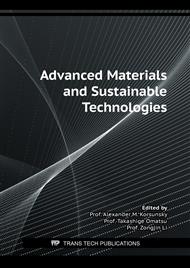p.139
p.153
p.161
p.167
p.175
p.183
p.191
p.199
p.205
Mechanical Properties of Concrete Incorporating Waste Tire Rubber as Aggregate
Abstract:
The study aims to investigate the mechanical properties of concrete containing waste tire rubber as aggregate. Three replacement ratios (0%, 5%, 15%) of aggregate with waste tire rubber were selected for casting concrete. The design compressive strength of concrete is 21MPa at the age of 28-day. Test results show that the slump and unit weight of fresh concrete decrease with the increase in the amount of rubber aggregates; the compressive strength of rubber fine aggregate concrete is higher than that of rubber coarse aggregate concrete. The flexural strength test results are similar to the compressive strength test. The ultrasonic pulse velocity of rubber fine aggregate concrete is higher than that of rubber coarse aggregate concrete, which increases with the increase of rubber aggregate content. The compressive strength of rubber aggregate concrete containing ground granulated blast-furnace slag (GGBFS, 30% cement replacement) at the age of 28-day presented slightly higher than that of rubber aggregate concrete without GGBFS.
Info:
Periodical:
Pages:
175-182
Citation:
Online since:
September 2022
Authors:
Price:
Сopyright:
© 2022 Trans Tech Publications Ltd. All Rights Reserved
Share:
Citation:



